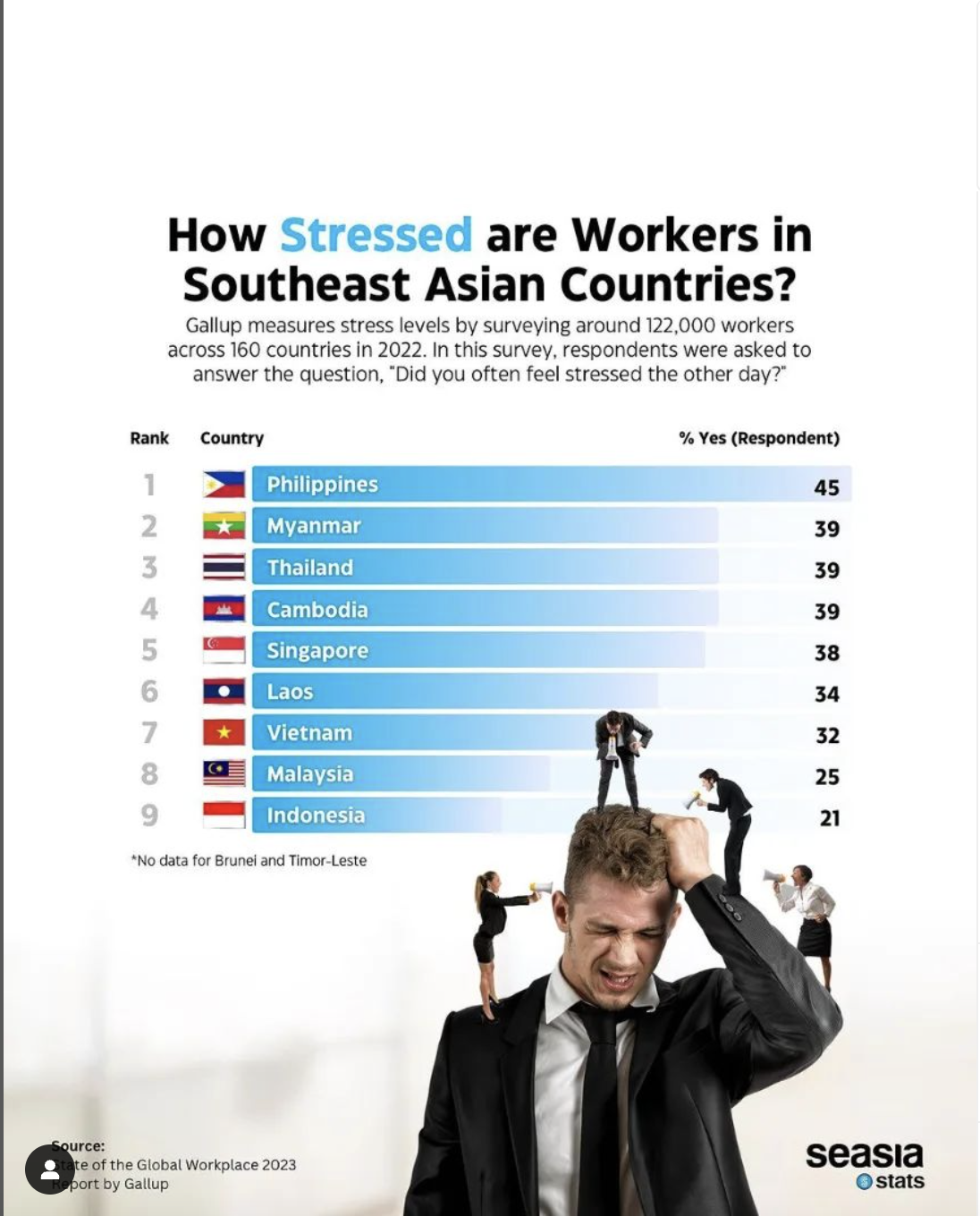Gallup, a global analytics and advisory firm, has published its State of the Global Workplace 2023 Report, in which it details the stress levels of workers worldwide. The findings of this study provide valuable insight about employee wellbeing, work-life balance, and stress management on a worldwide scale.
The World Poll's respondent pool comprised the whole civilian, non-institutionalized population aged 15 and above who worked under employer supervision, regardless of hours worked. Approximately 122,000 workers across 160 countries responded to the survey conducted in 2022.
Data was gathered in the form of responses categorized as "yes", "no", "don't know", or "refused to answer" to a query: "Did you experience the following feelings A LOT OF THE DAY yesterday? How about stress?”
The survey revealed that 44% of worldwide employees experienced a substantial level of stress in the preceding day before the survey was conducted. Global stress levels in 2022 remained steady since 2021; however, they showed a continued rise over the last decade. When compared to other regions, Southeast Asia possessed the second-lowest regional percentage of daily stress, accounting for 26%.
The Southeast Asian region demonstrated diverse levels of stress rates, with the Philippines taking the lead at 45%, surpassing the world average. Following closely were Myanmar, Thailand, and Cambodia, each at 39%.
While being the highest in the region, the Philippines had a 5% drop, and Thailand showed a decrease of 2% from its 2021 figures. Different trends compared to 2021 were seen in the statistics for Myanmar and Cambodia, which both indicated an uptick change of 2% and 1%, respectively.
Data indicated that Singapore, despite its reputation as having the region's highest working standards, ranked fifth, accounting for 38% of the total but showing the biggest rise of 4% compared to the 2021 number. The sixth and seventh places went to Laos (34%) and Viet Nam (32%).
While most Southeast Asian nations recorded stress rates above 30%, Malaysia and Indonesia figures showed distinct trends. Workers in Malaysia reported a stress level of 25%, making it the second-least stressful country. Meanwhile, Indonesia indicated only 21%, securing it as the least stressful worker within the region. However, no data available for Brunei Darussalam and Timor-Leste.
What factors contribute to the world's employees' stress levels? The Gallup poll did not seek in-depth explanations. Stress may be brought on by the work itself, and low engagement has been linked to elevated levels of stress. However, inflation and family health concerns are two examples of external factors that may also contribute to daily tension.
What, in your view, are the root causes of employee stress? What causes Filipinos to feel the greatest stress in the workplace?
Source: https://www.gallup.com/workplace/349484/state-of-the-global-workplace.aspx?thank-you-report-form=1




















